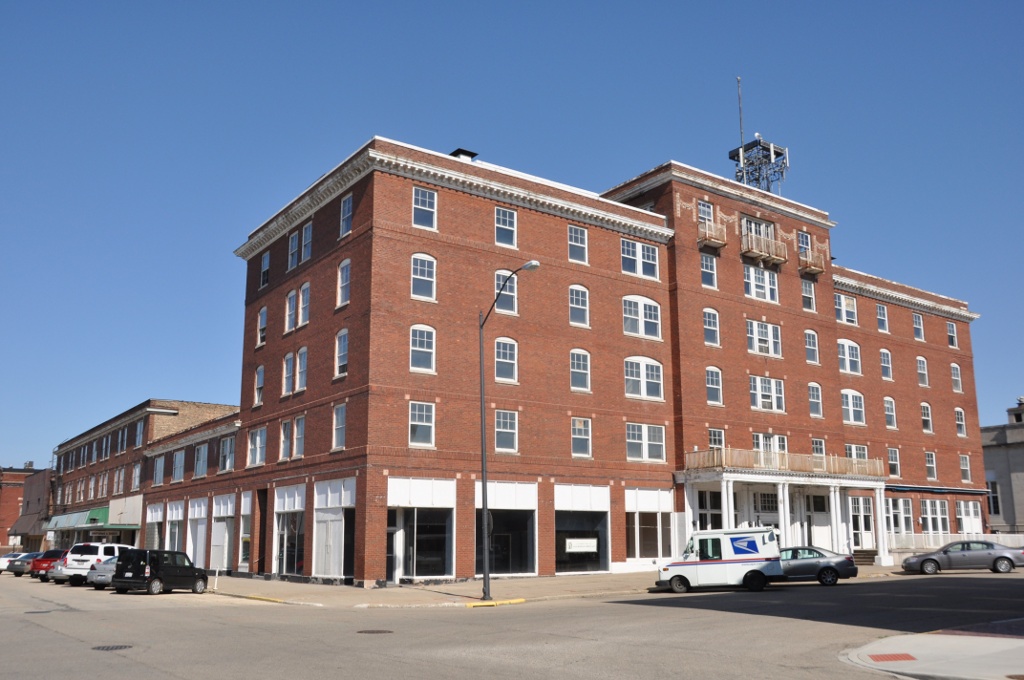Huddled around the microphone, the 10 musicians of the WJBC Studio Orchestra look ready for the signal from the sound engineer to begin their show. The small orchestra's instrumentation includes a concertina, two saxophones, drums, piano, banjo, violin, trumpet, trombone and a sousaphone. This postcard dates from 1928 and the band sits under a velvet canopy in the studio of radio station WJBC in LaSalle, Illinois, southwest of Chicago. The floor lamps and rug probably came from the station's owner, Wayne Hummer.
In May 1925, the Hummer Furniture Company in LaSalle secured a commercial radio station license to broadcast as WJBC at 100 watts. The new medium of radio was only a few years old, and communities across the US were facing "the chicken or the egg" dilemma. Why would people buy a radio unless there was a decent radio station to listen to? And why would anyone make an expensive investment in building a radio transmitter unless there were customers listening?
In LaSalle, a young man named Lee Stremlau had opened a radio and victrola shop. Though only just out of high school, he convinced Mr. Hummer that there was a profit to be made in this new technology. The Federal Communication Commission assigned call letters in alphabetic order by the application date, but Stremlau thought the station's initials would be more memorable in the slogan "Where Jazz Becomes Classic".
 | |
| Kaskaskia Hotel, LaSalle, IL source: Wikipedia | source |
The first programs were produced in the Hummer furniture store until 1928 when the studio was moved to LaSalle's Kaskaskia Hotel. The early radio sets had a terrible problem with controlling the dynamics of music and voices, either too loud or too variable. The audio fidelity on the AM frequency band was also very limited, so musicians were often placed in rooms designed to reduce the reverberation and extraneous noise. I suspect the floor lamps next to the WJBC band are there because velvet curtains were completely drawn all around the musicians when they played.
In 1934 the station was moved to Normal, IL and later changed ownership to become part of the NBC and then ABC radio networks.
This postcard from 1925 shows another early radio orchestra, also with 10 musicians: two violins, flute, clarinet, double bass, cello, organ, and two musicians whose instruments are hidden. The conductor is Joseph Knecht, music director of the Waldorf-Astoria Orchestra, which was also the orchestra for WEAF in New York City. The station was owned by AT&T Western Electric, one of the major manufacturers of radio equipment, and it began broadcasting on March 2, 1922 as the first radio station in New York City. The call letters have since changed and today it is known as WNBC.
 |
| Waldorf-Astoria Hotel circa 1915 Source: Wikipedia |
The Waldorf-Astoria Hotel was a bit larger than LaSalle's Kaskaskia Hotel. It is actually the amalgamation of two hotels built by competing Astor family cousins in 1893 and 1897. When they finally settled their dispute, it merged into what was once the largest hotel in the world. Today the hotel still operates, but on a different site. This building on Fifth Avenue was demolished in 1929 for construction of the Empire State Building.
The postcard was a method radio stations used to map out their radio signal. Listeners were encouraged to write to their favorite programs and in return they received a postcard. Using the addresses the station could track the strength of their signal. In this case, Mr. Allen J. Hoost lived in Brooklyn and probably got excellent reception.
The Waldorf-Astoria Orchestra began as the resident ensemble for the hotel in the 1890s, providing music for social occasions, dances, and dining. Joseph Knecht was the orchestra's leader in 1910, and conducted a regular orchestra of 35 players, mostly Italian and Jewish musicians, which was expanded to 50 for Sunday concerts. They accompanied many famous soloists and made several recordings for Edison records. The first radio broadcasts of the Waldorf-Astoria Orchestra were in 1923, and Knecht's association with the group seems to have stopped in 1925. He died in 1931.
The orchestra continued to play music for WEAF under various other conductors and after the hotel was moved to Park Avenue in 1931.
By the wonderful technology of our time, YouTube, we can listen to these same Waldorf-Astoria Orchestra musicians in a recording made in 1926 under Joseph Knecht. The foxtrot is entitled: I Gave You Up Before You Threw Me Down.
>>X<<
The invention of radio created a new way of listening to music. Now music could be heard for free, heard in family living rooms, heard in places hundreds of miles from the performers. Radio would make profound changes in the culture and business of music. As the early commercial broadcasters experimented to attract the attention of the public, classical music had new competition from blues, jazz, country and other kinds of popular music. Show business would never be the same.



































